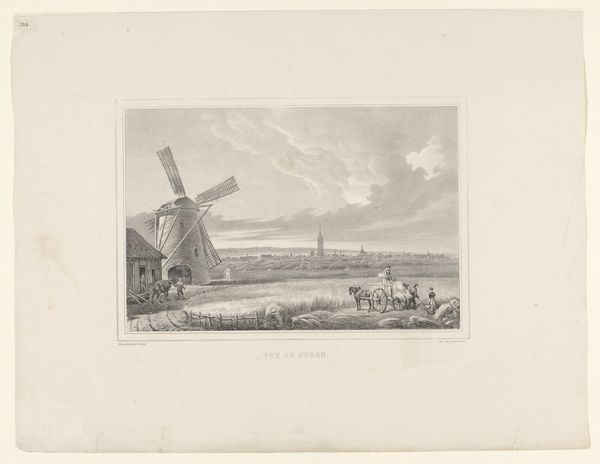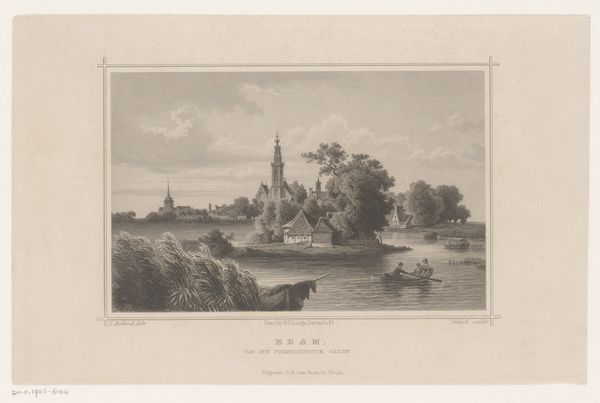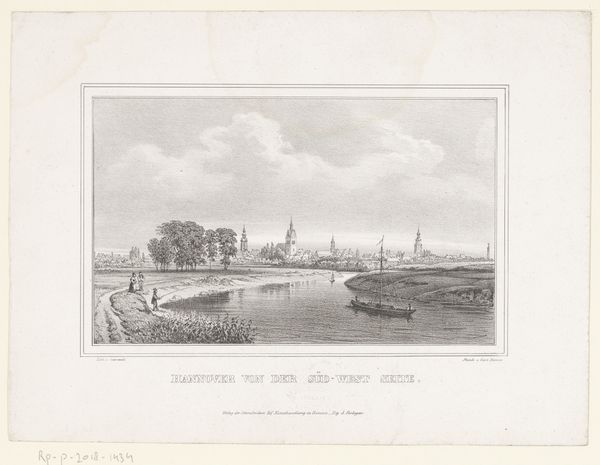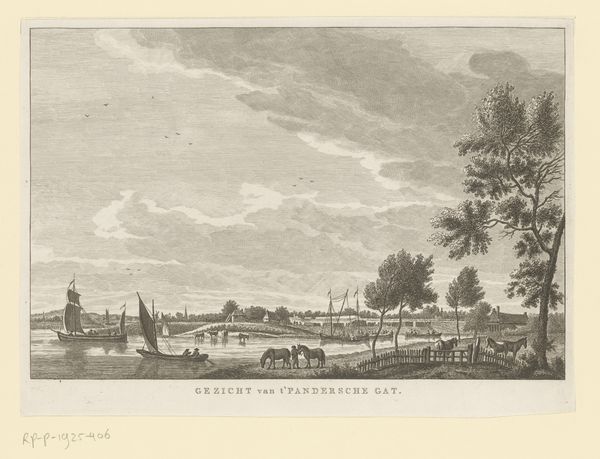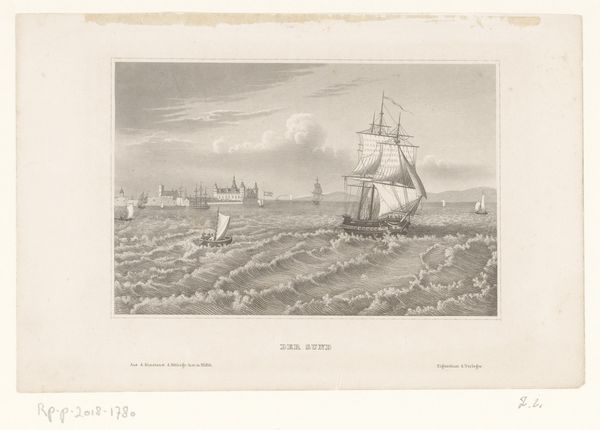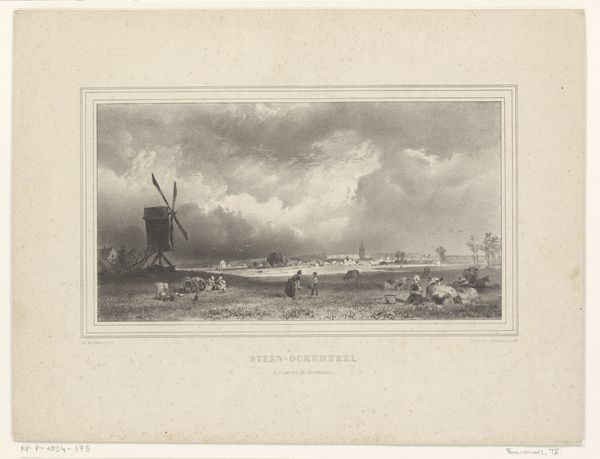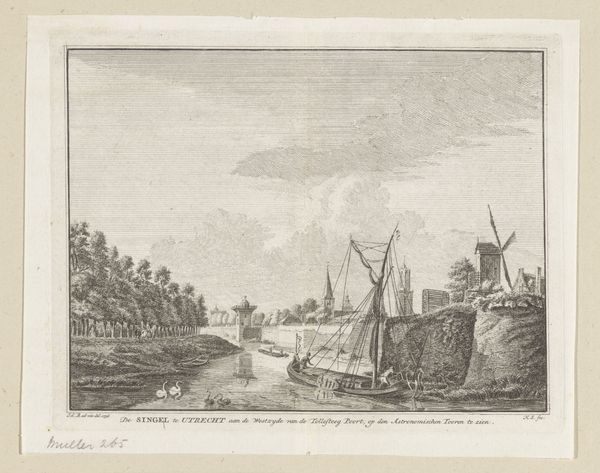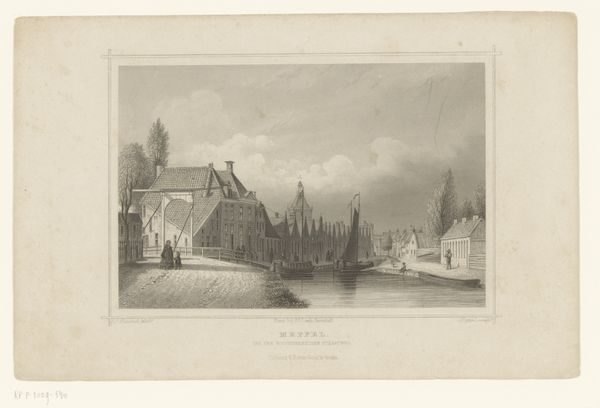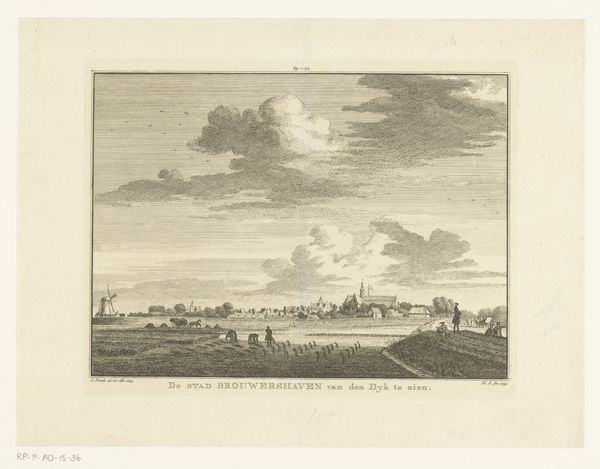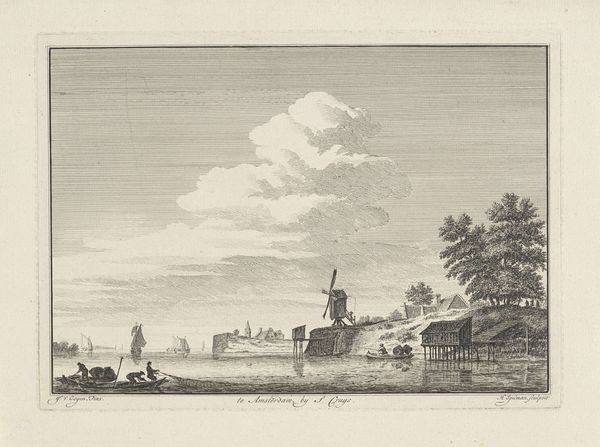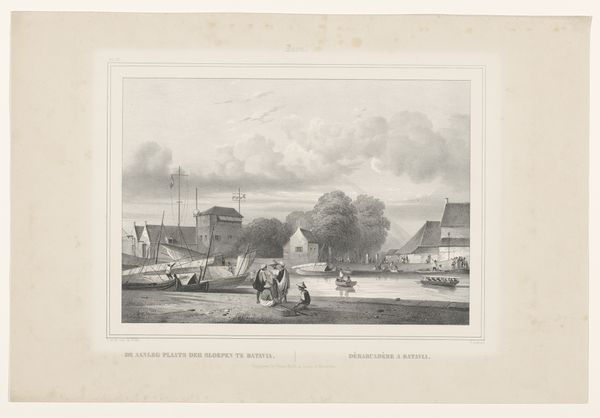
print, etching
#
dutch-golden-age
# print
#
etching
#
landscape
#
romanticism
#
cityscape
Dimensions: height 161 mm, width 231 mm
Copyright: Rijks Museum: Open Domain
Curator: Before us is "Landscape with Windmills and The Hague in the Background," an etching from Julius Umbach, created sometime between 1822 and 1873. Editor: It has such a still and quiet tone. The grey wash is almost melancholy, although there is an inherent compositional harmony to it all. Curator: Indeed, the etching is rich in the traditional Romantic style. You see how the artist uses the windmills and cityscape in the distance to subtly highlight human presence within the grandeur of the landscape? The atmospheric perspective is striking. Editor: Notice the strategic placement of the figure with their horse? How they're situated just off-center, but draw the eye in a way that reifies a pastoral tableau, that does indeed imply a sense of life lived. Is the artist subtly hinting at some grand national narrative? Curator: It's plausible. During this period, there was an ardent interest in celebrating the Dutch landscape and its emblematic structures such as these mills as symbols of national identity and prosperity. Editor: This artwork feels consciously composed; how lines define shape, and shadows construct a mood and dictate emotional responses through careful manipulation of tonal gradients. I feel the artist consciously pulls me in by carefully organizing its key visual elements to be so affecting. Curator: It's interesting to consider how a seemingly simple landscape can operate as a carrier of nationalistic sentiments and values of the era, presented by Umbach's adept employment of etching techniques. Editor: Yes, it speaks to how constructed landscape and history truly are. The mills aren't just picturesque elements, are they? They're integral to the Netherlands, symbolizing its industrial prowess. It really does become such a strong image once you know a bit about context and Dutch values. Curator: Indeed. A keen illustration of the convergence between artistic expression, the power of social narrative, and technological advancements of the time. Thank you for lending your incisive perspective. Editor: A pleasure. It’s a wonderful exercise to peel back those visual layers and unpack how history leaves its marks on art, and in turn how art influences history.
Comments
No comments
Be the first to comment and join the conversation on the ultimate creative platform.
